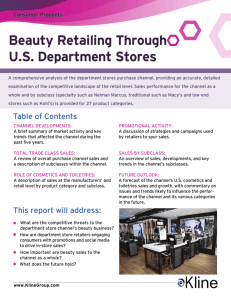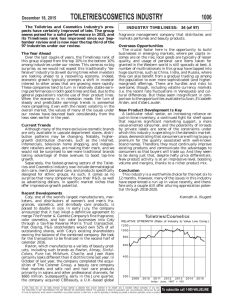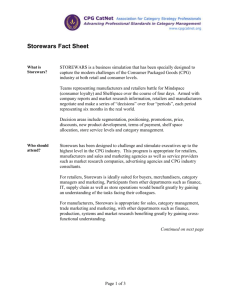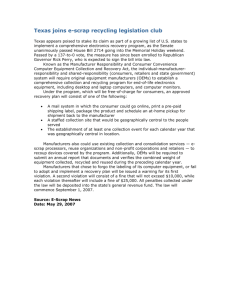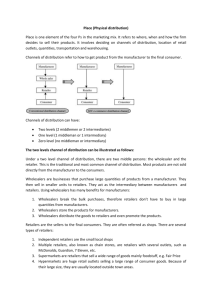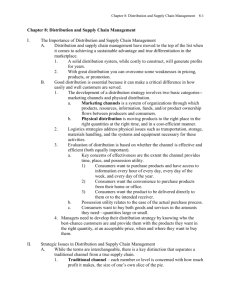SIC CODE: 2844
advertisement
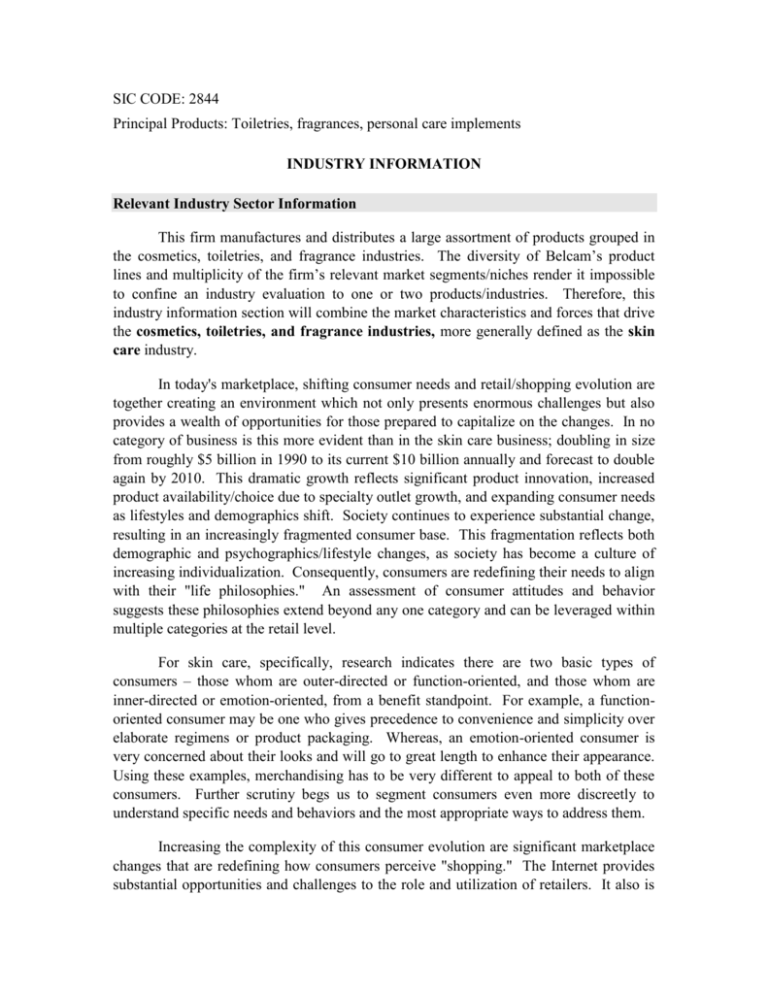
SIC CODE: 2844 Principal Products: Toiletries, fragrances, personal care implements INDUSTRY INFORMATION Relevant Industry Sector Information This firm manufactures and distributes a large assortment of products grouped in the cosmetics, toiletries, and fragrance industries. The diversity of Belcam’s product lines and multiplicity of the firm’s relevant market segments/niches render it impossible to confine an industry evaluation to one or two products/industries. Therefore, this industry information section will combine the market characteristics and forces that drive the cosmetics, toiletries, and fragrance industries, more generally defined as the skin care industry. In today's marketplace, shifting consumer needs and retail/shopping evolution are together creating an environment which not only presents enormous challenges but also provides a wealth of opportunities for those prepared to capitalize on the changes. In no category of business is this more evident than in the skin care business; doubling in size from roughly $5 billion in 1990 to its current $10 billion annually and forecast to double again by 2010. This dramatic growth reflects significant product innovation, increased product availability/choice due to specialty outlet growth, and expanding consumer needs as lifestyles and demographics shift. Society continues to experience substantial change, resulting in an increasingly fragmented consumer base. This fragmentation reflects both demographic and psychographics/lifestyle changes, as society has become a culture of increasing individualization. Consequently, consumers are redefining their needs to align with their "life philosophies." An assessment of consumer attitudes and behavior suggests these philosophies extend beyond any one category and can be leveraged within multiple categories at the retail level. For skin care, specifically, research indicates there are two basic types of consumers – those whom are outer-directed or function-oriented, and those whom are inner-directed or emotion-oriented, from a benefit standpoint. For example, a functionoriented consumer may be one who gives precedence to convenience and simplicity over elaborate regimens or product packaging. Whereas, an emotion-oriented consumer is very concerned about their looks and will go to great length to enhance their appearance. Using these examples, merchandising has to be very different to appeal to both of these consumers. Further scrutiny begs us to segment consumers even more discreetly to understand specific needs and behaviors and the most appropriate ways to address them. Increasing the complexity of this consumer evolution are significant marketplace changes that are redefining how consumers perceive "shopping." The Internet provides substantial opportunities and challenges to the role and utilization of retailers. It also is serving to change the value equation for consumers as related to convenience, valueadded services, and product variety. From a different perspective, the growth and expansion of specialty skin and bath outlets has increased consumer awareness and expanded the range of products for personal use and gift giving. Even traditional brick and mortar retailers across the globe have experienced significant change. Retail consolidation mandates more creative go-to-market approaches, with much greater emphasis today on establishing emotional links with customers to help increase shopper loyalty and conversion. While many traditional retailers are using specialty skin care brands as a way to achieve growth, research suggests many other ways to impact consumer solutions, correlating to skin care product sales. The good news is that any retailer can take advantage of this skin care revolution-whether big or small, highly integrated, or less technologically advanced. The ultimate challenge is to determine how best to leverage an integrated skin care approach that reflects how consumers think about these categories. Creating a common definition for “skin care” is the first step toward addressing the needs of consumers in a manner that can help grow the business. Research suggests that consumers do not specifically think about "categories" (as defined by retailers), when they refer to products that care for their skin. Their focus is more on end benefits such as cleansing and moisturizing. Consumers then translate these benefits into a defined core group of categories, as follows: Personal hygiene; bar soaps, body washes, liquid hand soaps, and sanitizers Hand and body lotions Bath additives Sun care Face care; cleansers, moisturizers, acne products, etc. Lip balms/body care products These consumer-based definitions can become the foundation for developing cross-category solutions that meet consumer needs in a manner that has the greatest likelihood for success. This can directly lead to incremental sales increases and profitability if properly leveraged. Legal/Environmental/Trade Issues None. Import Effect Summary Imports still command the larger share of the U.S. market, mainly due to the fierce competitive nature of manufacturers and the cost competitiveness of the products. Most of the larger manufacturers have facilities overseas, which provides a cost competitive arm for many. Cost is the most significant factor affecting this industry. Manufacturers must be able to compete solely on price because quality must be designed into the product before a consumer would even consider purchasing.
